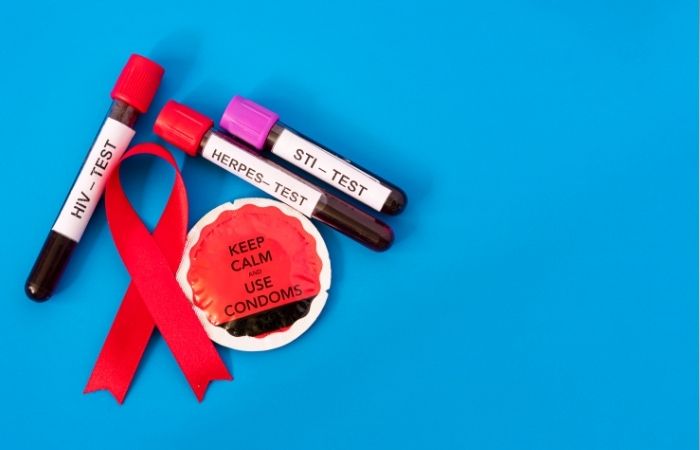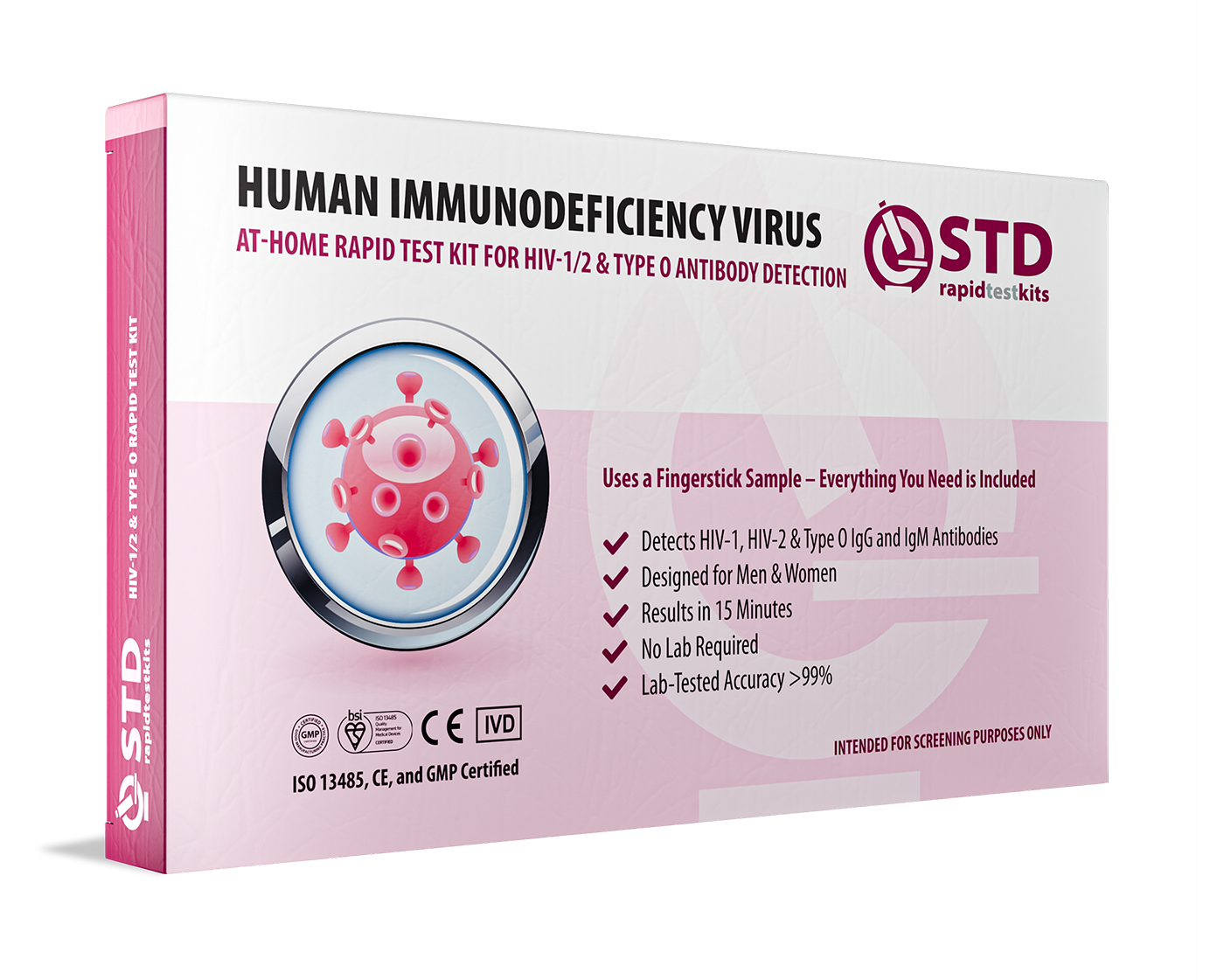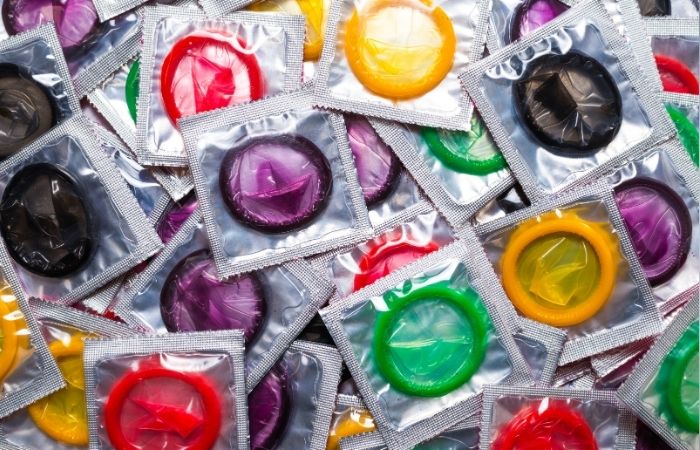Private and Accurate: How At-Home Test Kits Are Changing Sexual Health
At a Glance: Sexually Transmitted Diseases and HIV
Sexually transmitted diseases are the infectious disorders that can be transferred from one individual to another through sexual contact. A few examples of sexually transmitted diseases include genital herpes, which is caused by HSV-2, syphilis, gonorrhea, and chlamydia.
Whereas other non-ulcerative STDs, such as genital ulcers, create open wounds that heighten vulnerability to HIV, cause damage to the genital tract without visible sores. For more insights, you can learn about testing options in this guide to single STD tests.

How Does HIV Affect People?
The human immunodeficiency virus attacks the body's immune system, whose main target cells are the CD4 cells, commonly known as T-cells. Untreated HIV gradually weakens immune systems, making opportunistic infections and some malignancies more common.
Order Now $33.99 $49.00 Check Your STD Status in Minutes
Test at Home with Remedium
HIV Rapid Test Kit




Sexually Transmitted Diseases and the Transmission of HIV
How HIV Is Transmitted Biologically
Biologically, the connection between HIV and STDs includes:
- Inflammation and Immune Response:
Sexually transmitted diseases (STDs) such as chlamydia and gonorrhea can lead to genital tract inflammation. The risk of HIV transmission increases when this process recruits immune cells like CD4 cells, which HIV targets. - An HIV/Genital Ulcer Connection:
Sexually transmitted infections (HIV) can enter the body through genital sores caused by syphilis and herpes simplex virus type 2. - Impact on Immune Defenses:
STDs weaken the host's immune system and alter the vaginal microbiota, enhancing the immunological response, hence making HIV infect host cells more successfully.
Behavioral Factors Contributing to HIV Risk
Behavioral factors that may put one at risk for acquiring HIV infection include:
- Inconsistent Condom Use:
Individuals with STDs are more likely to engage in behaviors that put them at risk of acquiring HIV, such as inconsistent condom use. - Delays in Treatment:
The longer period of heightened risk for HIV stems from the stigma of the STDs that causes persons to disregard the signs.

Factors Affecting the Risk of HIV Transmission Through Specific STDs
- Frequency of Syphilis Infection and HIV:
It is possible to have infection of HIV in syphilis sores directly. Some studies have reported that an individual with untreated syphilis is at an increased possibility of getting other infections. - Pseudomonas and Chlamydia:
These effects render individuals more vulnerable to HIV infection because the inflammation gonorrhea and chlamydia cause makes people more prone to acquiring it. They increase the risk even more by intensifying the immunological response if not treated. - Herpes Simplex Virus Type 2 and the Risk of HIV Infection:
Aside from open sores, HSV-2 promotes the risk of co-infection with HIV even more due to the chronic inflammatory environment it causes. - Viral Infections and Non-Ulcerative STIs:
More subtly, however, even in the absence of overt symptoms, non-ulcerative STDs may cause sufficient change to mucosal barriers and/or immune defenses to significantly facilitate HIV transmission.
For additional testing options, explore combo STD home test kits.
The Two-Way Street of HIV and Co-Infection
There is a bidirectional interaction between sexually transmitted diseases and HIV. As HIV compromises the body's immunity, its carriers are highly susceptible to developing grave complications caused by STDs.
Higher viral load and longer infectiousness are some of the risk factors that co-infections elevate. You can read more about these interactions in this blog about STD and HIV co-infections.
Order Now $129.00 $343.00 Check Your STD Status in Minutes
Test at Home with Remedium
7-in-1 STD Test Kit




For all 7 tests
Strategies for Prevention That Can Break the Cycle
Regular Sexually Transmitted Disease Testing
Frequent testing for early detection of infections reduces the risk of HIV transmission because it reduces inflammation and other cellular mechanisms. Imagine being able to take these STD test kits in the comfort of your homes and the level of privacy and convenience involved.
Learn how these test kits can help in this comprehensive guide to STD testing options.
Timely Medical Intervention
Rapid treatment of STDs reduces the impact of STDs on HIV susceptibility.
Correct Use of Condoms
Correct condom use prevents most sexually transmitted diseases and HIV due to minimum exposure to the infectious agent, and the mucosal barrier is maintained.
PrEP and PEP
Pre-exposure prophylaxis (PrEP) and post-exposure prophylaxis (PEP) are effective preventive measures against HIV. Individuals at a very high risk of acquiring HIV due to their exposure to sexually transmitted diseases can benefit significantly from these interventions.
Comprehensive Sex Education
People can be empowered to take responsibility for their health and make more informed choices regarding their sexual behaviors when they are educated about HIV risk factors and the role sexually transmitted diseases play in the transmission of the virus.

FAQ
1.- How can STDs increase the risk for HIV infection?
HIV is more easily transmitted when STDs produce ulcers, inflammation, and/or damaged mucous membranes.
2.- Which sexually transmitted diseases are most dangerous for the transmission of HIV?
The threat of STDs such as syphilis and HSV-2 is greater because the genital ulcers make infections worse, whereas the inflammation makes people more susceptible to diseases like gonorrhea and chlamydia.
3.- Does HIV risk go down after treating an STD?
There is a reduced chance of HIV transmission when patients get timely treatment due to reduced inflammation and immune cell recruitment.
4.- How does genital herpes (HSV-2) increase the risk of HIV infection?
Open sores from HSV-2 activate the host's immune response, facilitating host infection by HIV.
5.- How does inflammation enhance the risk of HIV?
Inflammation caused by STDs attracts immune cells, including CD4 cells, which HIV targets, increasing co-infection risk.
6.- Is the facilitation of transmission of HIV also done by non-ulcerative STDs?
Yes, non-ulcerative STDs increase HIV susceptibility indirectly through inflammation and disruption of natural defenses.
7.- How reliable are home STD testing kits for checking HIV risk factors?
Home testing kits help reduce HIV susceptibility by enabling individuals to seek early treatment for STDs.
8.- How regularly should one go for STD testing to reduce the risk of HIV?
Frequent testing is recommended for sexually active individuals, especially after new partners, to keep the risk of HIV low.
9.- Is syphilis linked to HIV?
The genital ulcers from syphilis facilitate vulnerability to HIV infection because they serve as entry points into the body.
10.- How can one reduce vulnerability to HIV based on sexually transmitted diseases?
HIV vulnerability can be reduced by using PrEP, getting frequent testing, starting treatment promptly, and using condoms consistently.
Maximize Your Sexual Health
The first thing you can do to protect yourself and others from getting the virus is learning about the connection between STDs and HIV. Testing regularly, practicing safer sex, and getting treated for STDs can help reduce the risk of HIV infection.
One effective way to monitor your sexual health without distress or awkwardness is testing for an STD using an STD test kit from your home. These test kits can help in the early detection of various illnesses that make you more vulnerable to HIV, among others, from the convenience of your home.
Take control of your health and prevent problems before they begin with early diagnosis at home. Visit STD Rapid Test Kits today to explore your options for safe, convenient testing.
Sources
2.- How STDs Increase HIV Risk - ScienceDaily
3.- STDs and HIV Risk: Biological Pathways - PMC
4.- Can STDs Increase HIV Risk? - CDC










